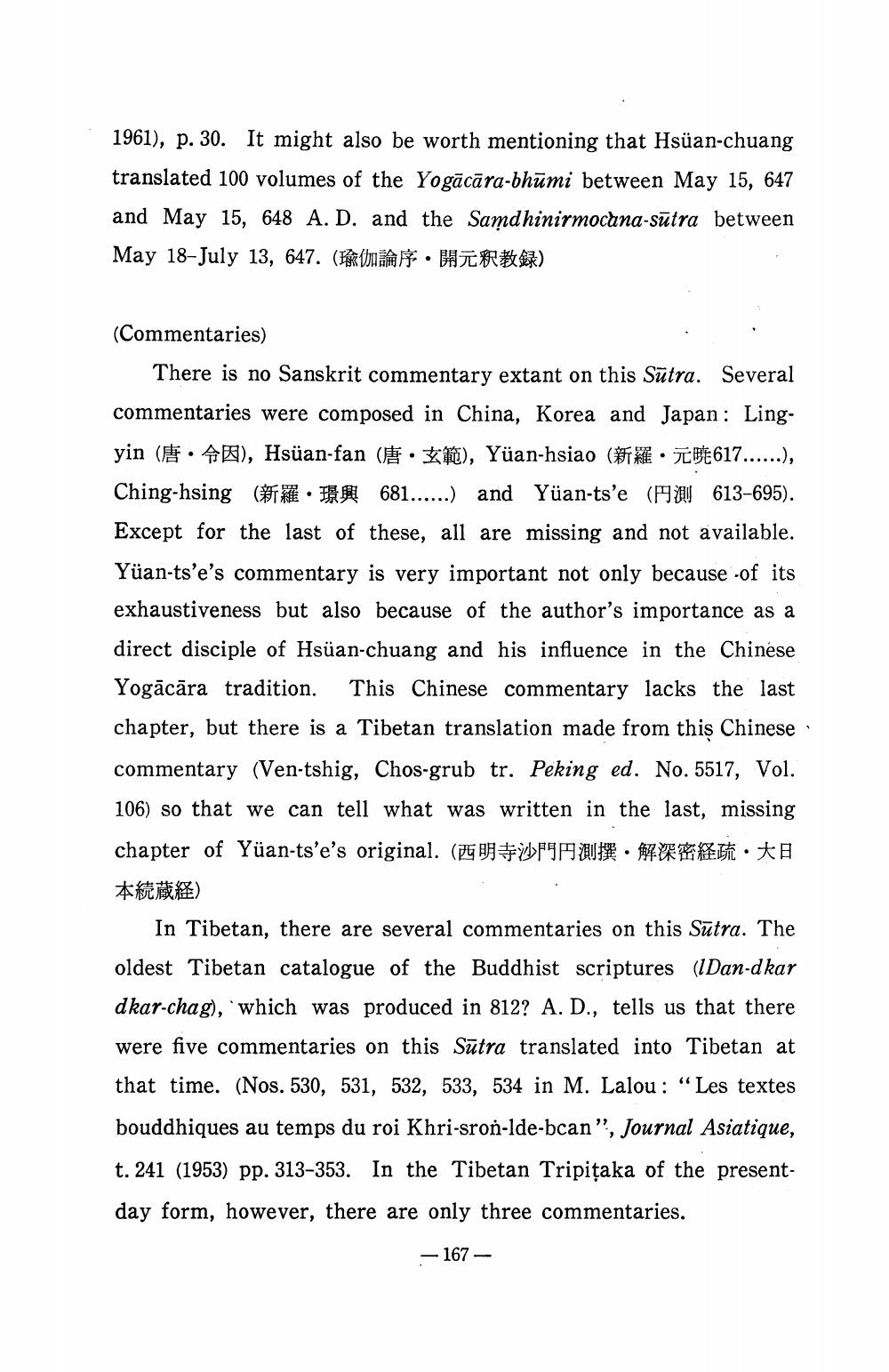Book Title: Analysis Of Yoga In Samdhinirmocana Sutra Author(s): Shinjo Kawasaki Publisher: Shinjo Kawasaki View full book textPage 4
________________ 1961), p. 30. It might also be worth mentioning that Hsüan-chuang translated 100 volumes of the Yogacara-bhumi between May 15, 647 and May 15, 648 A. D. and the Samdhinirmocana-sutra between May 18-July 13, 647. (• HRK) (Commentaries) There is no Sanskrit commentary extant on this Sūtra. Several commentaries were composed in China, Korea and Japan: Ling), Yuan-hsiao (617......), • yin (4), Hsüan-fan ( Ching-hsing · 681......) and Yuan-ts'e (613-695). Except for the last of these, all are missing and not available. Yuan-ts'e's commentary is very important not only because of its exhaustiveness but also because of the author's importance as a direct disciple of Hsüan-chuang and his influence in the Chinese Yogacara tradition. This Chinese commentary lacks the last chapter, but there is a Tibetan translation made from this Chinese commentary (Ven-tshig, Chos-grub tr. Peking ed. No. 5517, Vol. 106) so that we can tell what was written in the last, missing chapter of Yuan-ts'e's original. (E· FAZER · 本続蔵経) In Tibetan, there are several commentaries on this Sutra. The oldest Tibetan catalogue of the Buddhist scriptures (Dan-dkar dkar-chag), which was produced in 812? A. D., tells us that there were five commentaries on this Sutra translated into Tibetan at that time. (Nos. 530, 531, 532, 533, 534 in M. Lalou: "Les textes bouddhiques au temps du roi Khri-sron-lde-bcan", Journal Asiatique, t. 241 (1953) pp. 313-353. In the Tibetan Tripitaka of the presentday form, however, there are only three commentaries. -167 2. יPage Navigation
1 2 3 4 5 6 7 8 9 10 11 12 13 14 15 16
